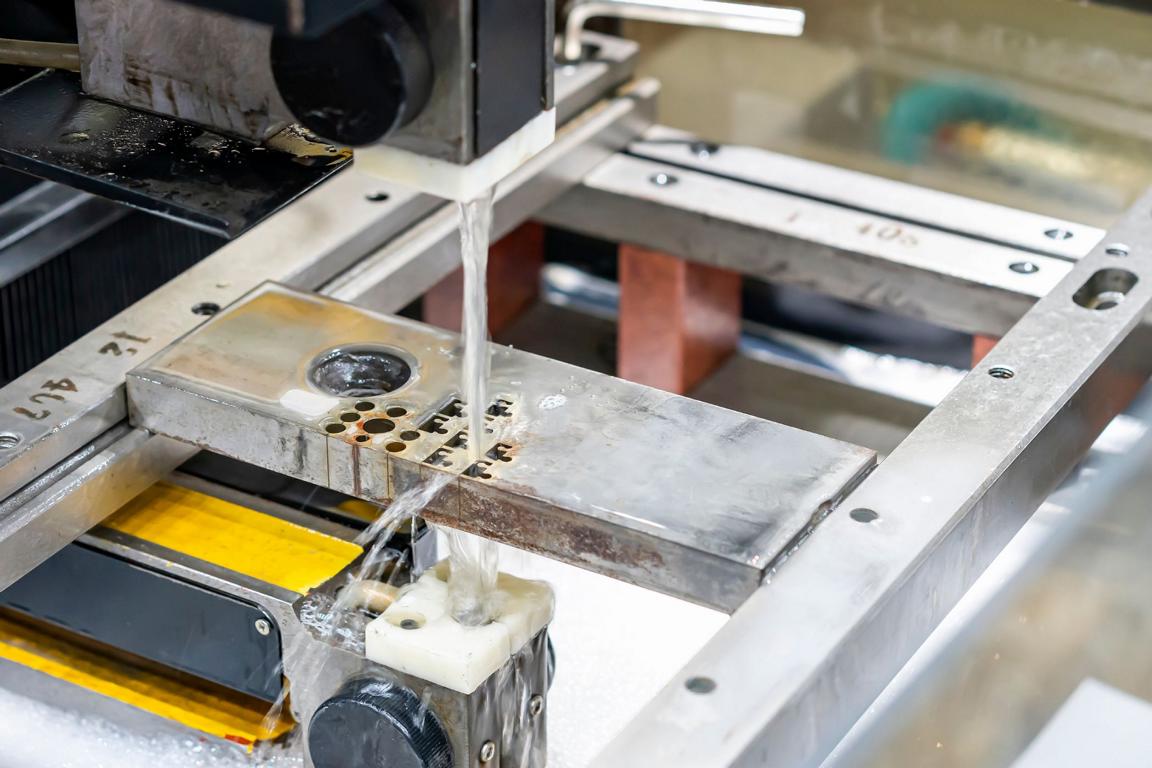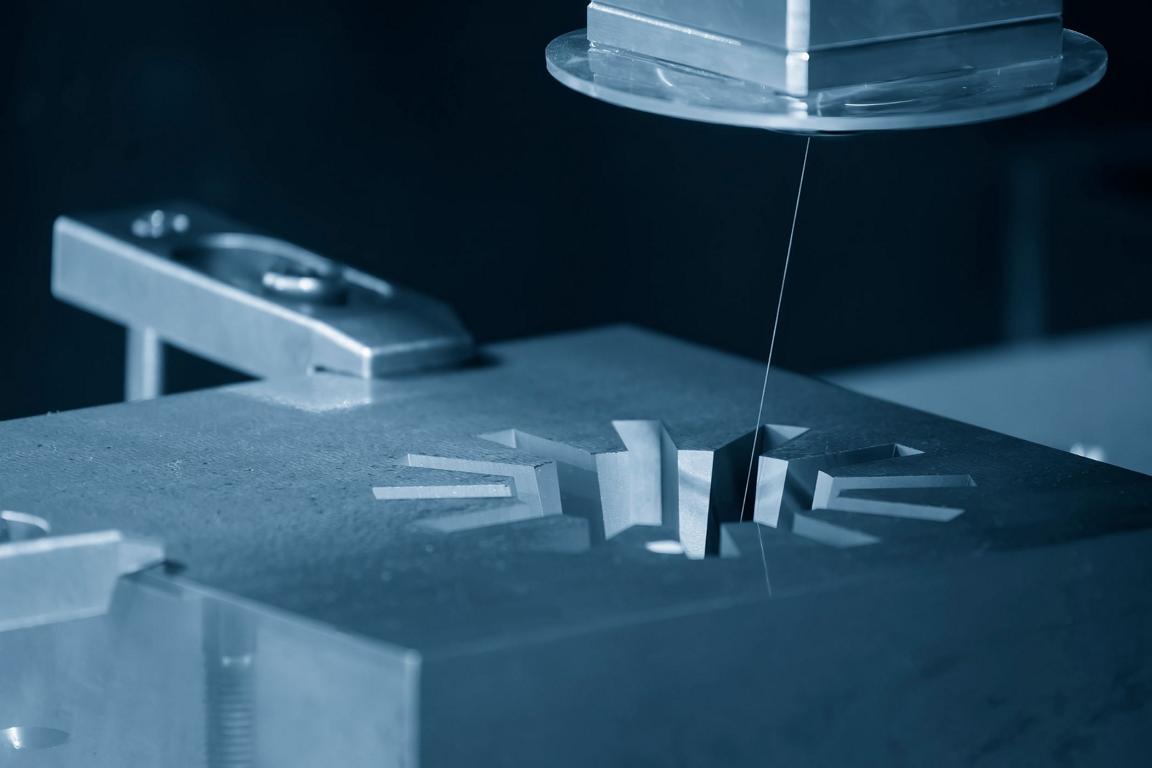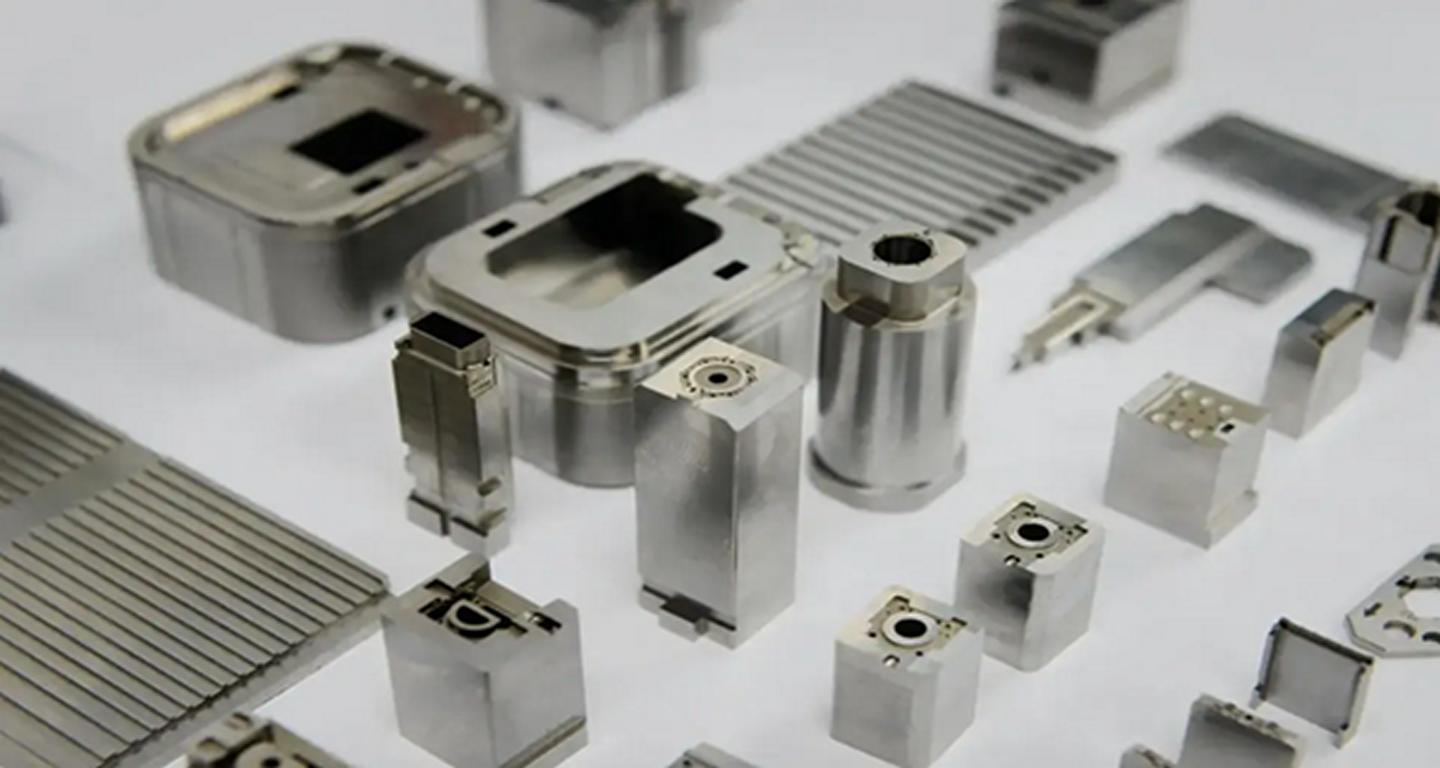The Wire EDM machining is a non-conventional contemporary electrothermal technique that employs electric sparks to erode material from a targetted material (Job material). It can cut to shape intricate design prototypes and is also employed to shear parts in large volumes with high dimensional stability. Small contours or microholes can be easily shaped using a standard wire EDM machine with minimal tool wear. It is a more precise and accurate process than conventional metal-cutting techniques. One of its core features is that it can nearly pierce down any high-strength and conductive material and shape complicated geometries without any mechanical force. This blog post highlights the enormous potential of wire EDM cutting machining, discussing their applications, types, and shearing capabilities.
Wire EDM: An Introduction To Process
In the metalworking industry, Wire Electrical Discharge Machining (Wire EDM) is presumed to be an exact and accurate technique that uses a thin wire(electrode) charged electrically to shear metals. The wire runs in a dielectric fluid that cools the material and removes the eroded particles as well.
Wire EDM machining does not remove material through direct cutting but rather uses an electrical discharge to erode the material. Instead of cutting it, it melts or vaporizes it, which gives the tool great precision and produces very little shavings. This process is beneficial for making parts that are challenging to machine using conventional techniques if the materials are electrically conductive.
How does wire EDM work?
The Wire EDM process is simple but very efficient. It begins with the immersion of the workpiece in a dielectric fluid and placing it on a vise. A thin wire with an electrical charge is then passed through the workpiece. The workpiece being conductive, acquires the opposite charge to that of the charging roller.
As the wire approaches the workpiece, an electric arc is formed across the gap and this causes the generation of heat that melts or vaporizes a small amount of metal. These sparks work as the cutting tool and continue to shave the workpiece to the required shape.
Throughout the entire process, deionized water is used to regulate the machining environment and to remove the metal particles eroded by the process. This arrangement makes it possible to achieve very fine and accurate cutting and finishing of the parts, especially when the parts are complex and require a high degree of accuracy.

Wire EDM Machine Parts
Here are the main wire edm machine parts listed below;
- CNC Tools
Wire EDM is automated by CNC tools that regulate the sequence of the wire path and the cutting process. These tools are very important for the accuracy and efficiency of the operations since the level of sophistication of these tools determines the level of errors and machining time.
- Power Supply
The power supply unit provides electrical impulses to both the wire electrode and the workpiece, which varies from 100V to 300V. It controls the rate and magnitude of these charges, which are crucial for material removal.
- Wire
The wire produces the electrical discharge potential by making it the electrode. Its diameter, usually varying from 0. 05 to 0. 25mm, is selected depending on the shape and thickness of the job material. When choosing the wire for cutting, consider fracture resistance, impact resistance, conductivity, vaporization temperature, and hardness.
Common wire types include:
- Brass Wires: These are famous for their excellent conductivity and are produced from copper and zinc combined at a ratio of 63% and 37%, respectively. Zinc content raises the cutting speed but should not be more than 40% as it causes corrosion.
- Zinc-Coated Wires: These wires have a layer of pure zinc or zinc oxide which improves the machining rate.
- Diffusion-Annealed Wires: These wires are produced through diffusion annealing and contain more than 40% of zinc, which makes them ideal for large scale production and cutting through different materials.
- Dielectric Medium
The wire EDM machining process is carried out in a tank containing dielectric fluid, typically oils or deionized water. This medium also reduces the rate of the process, avoids the formation of a layer on the wire electrode, and provides a smooth surface finish on the workpiece.
- Electrodes
In wire EDM machining, the wire tool acts as a positively charged (cathode), while the workpiece acts as a negatively charged (anode) of the electrical circuit. A servo motor (controller) creates a gap of 0.01 to 0.5 mm in the wire so it does not touch the workpiece during cutting, which is critical for accuracy and helps avoid fractures in the intended workpiece.

What Materials Types Can Be Cut by a Wire EDM Machine?
Wire EDM machining is very useful and can cut almost any electrically conductive material and produce complex geometries and contours. Here are some common materials that can be effectively cut using a Wire EDM machine
Aluminum
Aluminum is one of the most versatile metals that has high thermal and electrical conductivity. Wire EDM machining is naturally soft, which means that during the machining process, gummy deposits can build up; however, Wire EDM can manage this issue and achieve exact cuts.
Titanium
Wire EDM machining is best suited for Titanium because it is sticky and generates long chips. The process can handle these properties effectively. Deionized water as the dielectric medium assists in minimizing heat production and thus makes the cutting process smooth and easier.
Steel
Wire EDM is advantageous to steel since it is a strong metal. This process is often used in preference to CNC machining for steel because of the latter’s ability to manage the material’s hardness. However, steel produces a lot of heat and hence, necessary precautions have to be taken in this regard.
Brass
Due to its high tensile strength, brass is comparatively easy to cut with Wire EDM. Because it is relatively soft, the cutting speed should be relatively slow so as not to cause the material to deform and thus affect the accuracy of the cut.
Graphite
Graphite is relatively difficult to machine using conventional tools because of its inherent brittle nature and particle pull-out problem. Wire EDM, with its sharp wire electrode, can efficiently machine graphite, giving clean and accurate cuts.
These materials are some of the conductive materials that Wire EDM machines can process, making the technology applicable in several industries that demand high precision and intricate designs.
Difference Between Wire EDM & Conventional EDM Machining
Wire EDM machining and conventional EDM are two distinct types of shearing processes. The Wire EDM and conventional EDM work on the same principle but their working and uses are quite different. Here’s a breakdown of how they differ:
Electrode Type
Wire EDM: As discussed above, it uses a thin strand wire that is heated to act as an electrode and which moves to cut to shape the required shape, and size part or product.
Conventional EDM: Uses electrodes made from very conductive materials such as graphite or copper and can be of different geometries. These electrodes are placed into the workpiece, thus producing the ‘negative’ image of the electrodes’ shape.
Machining Speed
Wire EDM: This is ready to start as soon as the wire is positioned, which makes it more efficient and ideal for projects with tight deadlines.
Conventional EDM: The electrodes must be pre-shaped before the machining process, which may take a lot of time, go to electrical discharge machining page to know more.
Accuracy
Wire EDM: Provides high accuracy; it can cut as thin as 0. 004 inches. This makes it suitable for cutting intricate patterns and designs on the fabric.
Conventional EDM: Although it is also used for complex cuts, it cannot be as precise as wire EDM, which makes it suitable for simpler and stiffer cuts.

Advantages and Disadvantages of Wire EDM Machining
Wire EDM Prototype Parts
Pros
Precision: Provides immaculate cuts, which means little or no further processing or finishing is required.
- Complex Shapes: Conventional CNC machining can help create intricate patterns that are difficult to create from traditional techniques.
- Small Parts: Suitable for use when working on small and intricate parts that are difficult to handle.
- Fragile Materials: CNC Wire EDM machines are applicable to materials that cannot be subjected to stresses and are difficult to machine through conventional cutting machinings.
- Clean Cuts: It doesn’t leave any burr or distortion behind, which means that there is no need for the post-processing.
- Continuous Cutting: It can cut without stopping the operation and even start cutting again if the wire gets snapped.
Cons
Material Limitations: It is only applicable to electrically conductive materials.
Slower for Thick Materials: Not as effective on very thick or rigid materials as conventional EDM.
Cost: Wire EDM machines can be expensive, especially when one has to factor in the initial cost of the machines.
Maintenance: It needs to be maintained often to keep it accurate and fast.
Knowing these differences and the advantages and disadvantages of Wire EDM can assist manufacturers in determining which technique is more appropriate for their application use.
Applications of Wire EDM Machining
Wire EDM is used across automotive, aircraft, and medical industries, ranging from producing detailed prototypes to mass production parts. Here’s a breakdown of some key sectors that use this cutting-edge technology:
Automotive Industry:
In the automotive industry, where the parts are usually complex in shape and the material used is quite complicated, wire EDM is used. This process does not involve mechanical force and is ideal for creating parts such as bumpers, dashboards, doors, and many others with holes and recesses.
Medical Industry:
In the medicare industry, EDM machines are significant for shaping intricate prototype parts optimally used in equipment such as optometry and dentistry. The process is especially effective when used on metals suitable for medical device production, strengthening the structures of items such as dental implants and syringe parts while adding complex designs.
Aerospace Industry:
Wire EDM also plays a vital role in the aerospace industry. The process adopted for creating aerospace parts that need to have close tolerances down to +/-0.005x, and smooth surface finishing. It works hand in hand with waterjet cutting for parts that cannot withstand heat and stress from conventional cutting tools. This technology has been widely used in the manufacturing of engine parts, turbine blades, landing gear components, and many others for a long time.
Conclusion:
Wire EDM can be considered one of the most accurate and flexible technologies for cutting, which is highly appreciated in industries that require complex shapes and high accuracy. Wire EDM is a particularly valuable technique for cut-to-produce prototyping and mass-produced intricate parts due to its high accuracy and ability to meet tighter tolerances.
Are you looking to source a wire EDM manufacturing project or wire edm machining near me
? Sincere Tech is a well-established manufacturing wire edm machining services company with experience in multiple CNC operations, including wire EDM. These features allow us to achieve accurate cuts on various conductive materials to meet the needs of different parts in multiple industries. If you want to learn more, please contact our EDM manufacturing specialists for more information on your requirements and project details.
FAQ’s
Q1: What is the accuracy or the tolerance limit of Wire EDM in terms of dimensions?
Normally Wire EDM is very accurate, the fast wire EDM can do the tolerances as tight as ±0. 1 millimeters. the CNC wire EDM process can meet 0.05mm tolerance.
Q2. How is Wire EDM different from Laser Cutting?
Wire EDM works by electrical erosion from a wire, while laser cutting uses a high-power thermal beam to cut through materials, and the tolerance is different as well, wire EDM will be more prcision than laser cutting.
Q4. Why is deionized water a vital ingredient in wire EDM?
Wire EDM uses deionized water as the dielectric medium since it has low carbon content. It also serves as a heat sink to ensure that the dielectric temperatures are kept at an optimum level during the machining process.

